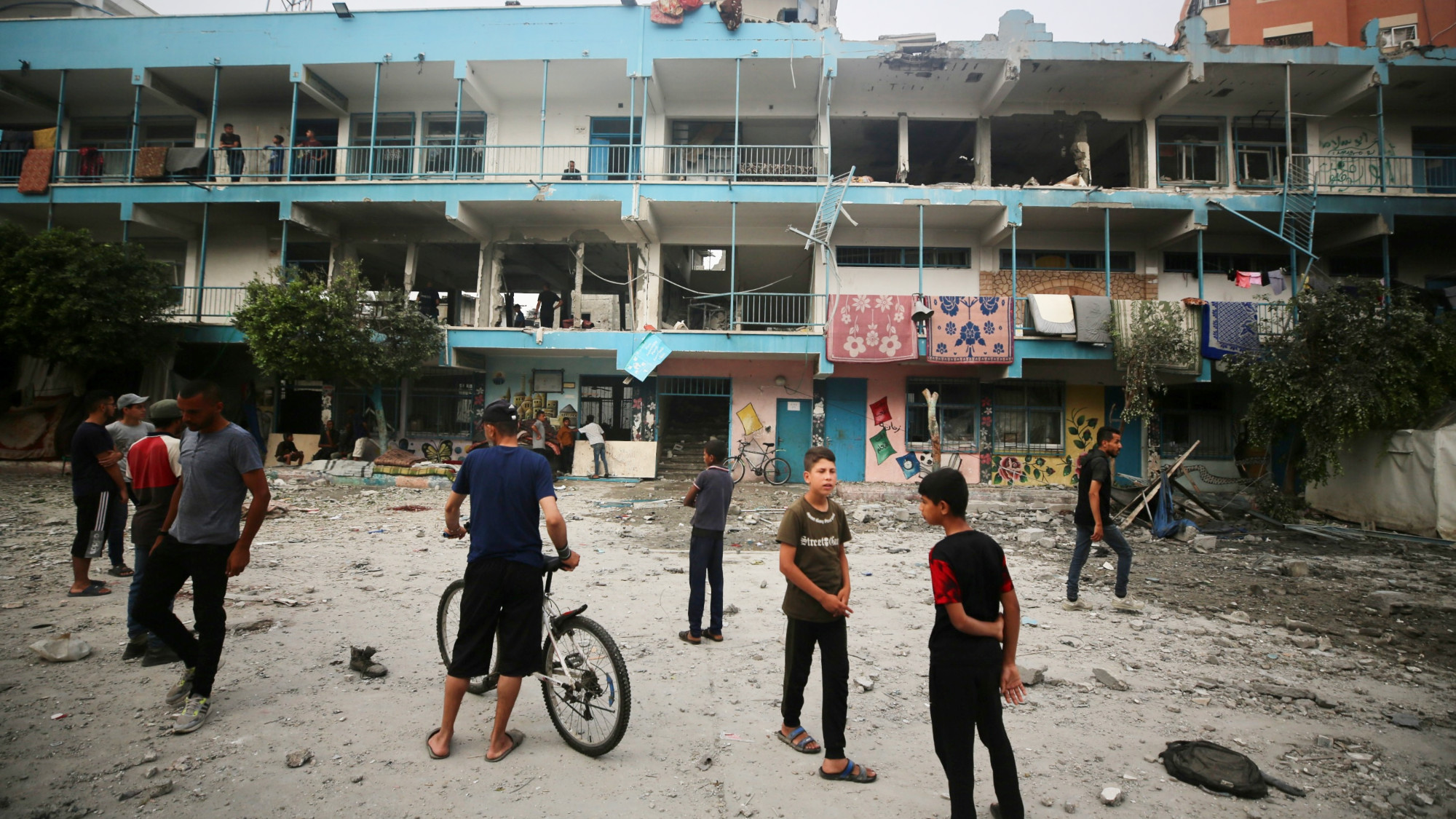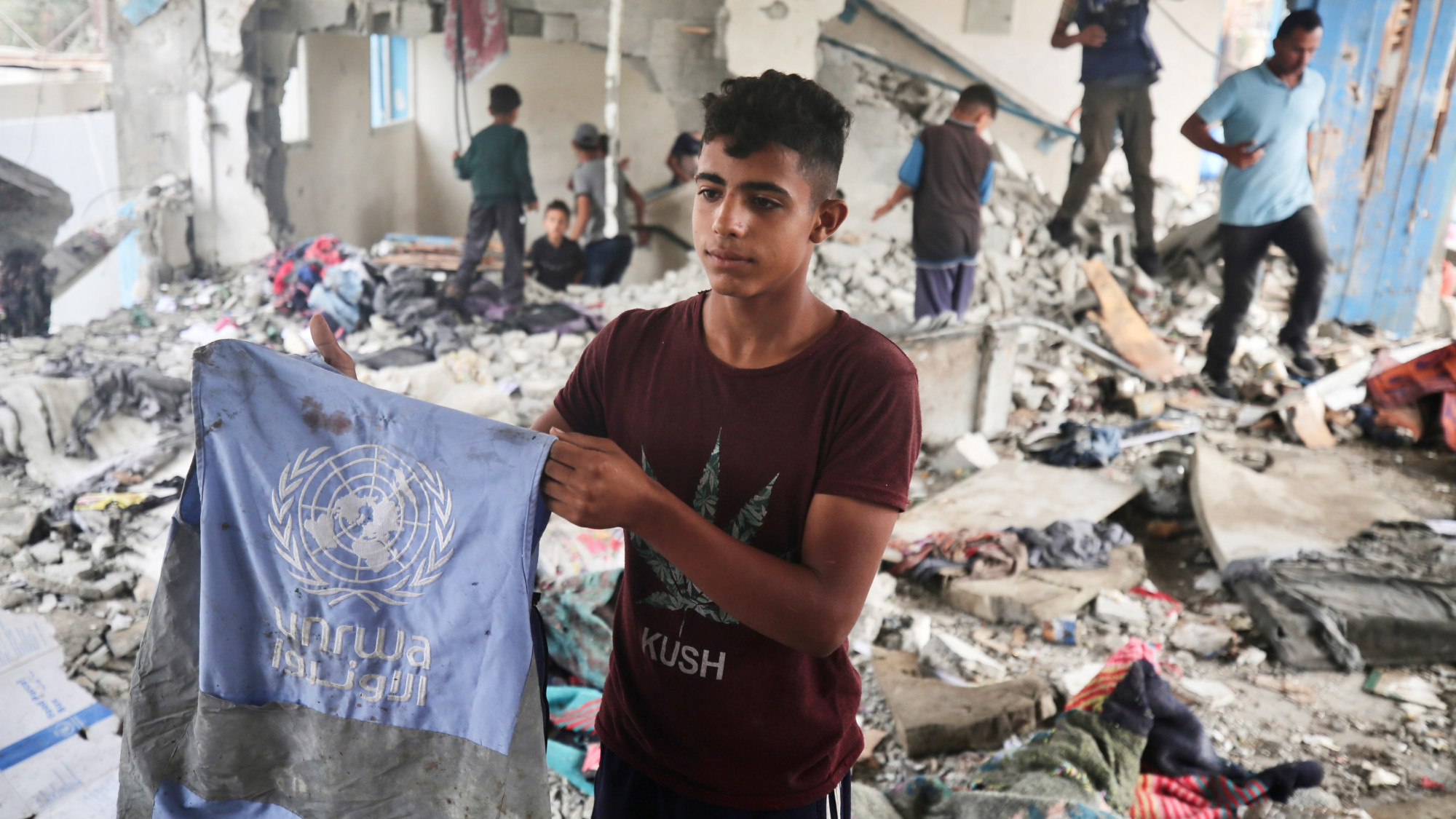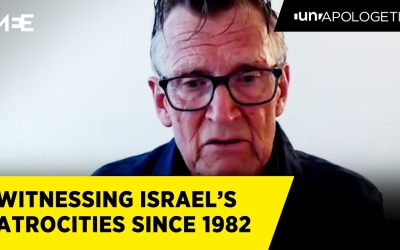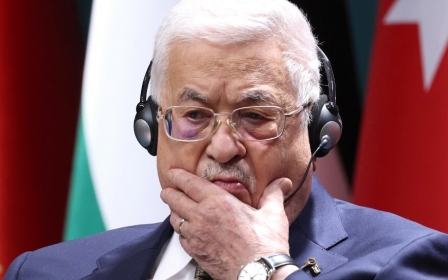War on Gaza: Israeli strike on UN school kills at least 40 in central Gaza
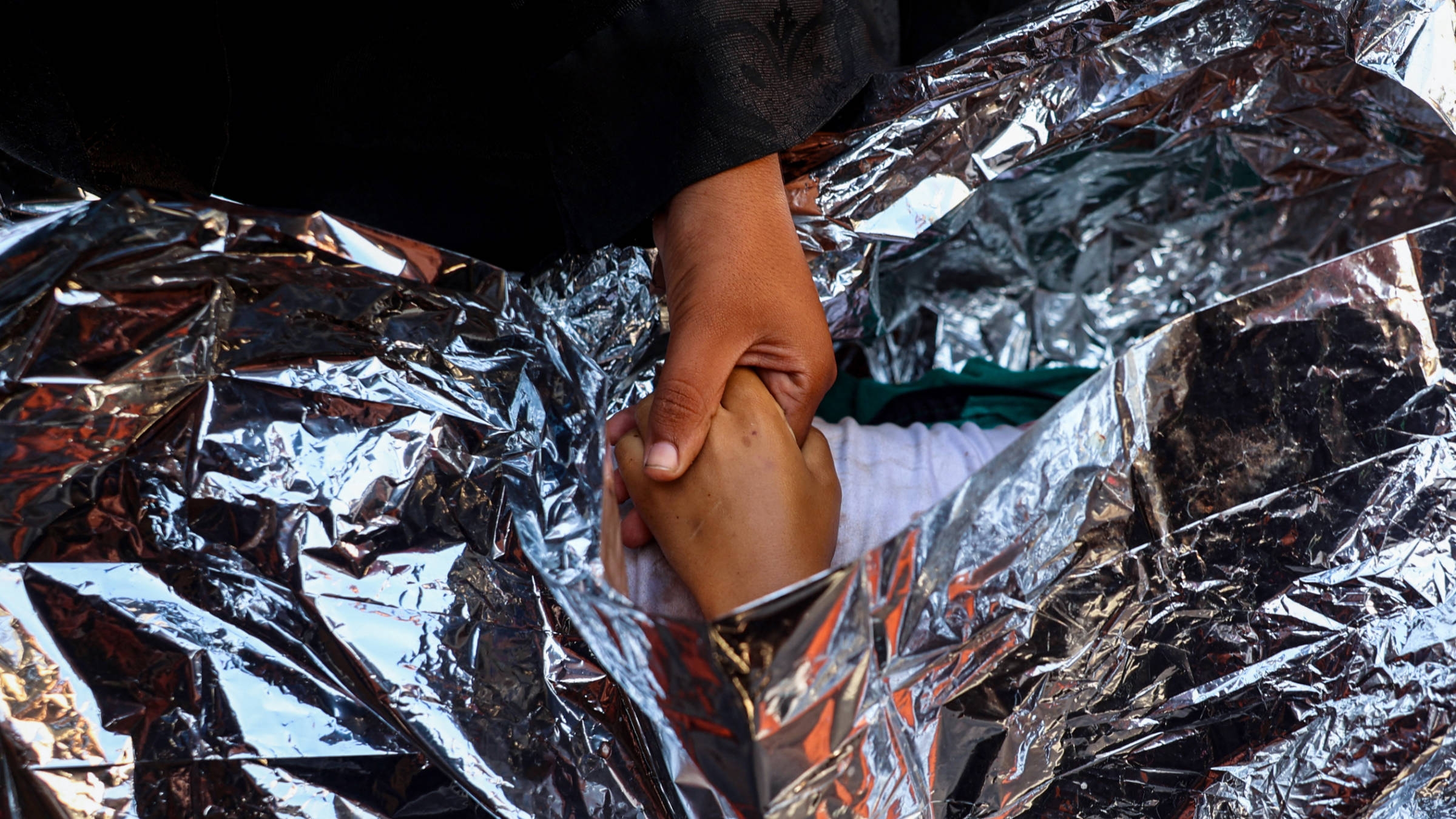
An Israeli strike on a UN-run school killed dozens of people in the Nuseirat refugee camp, central Gaza, on Thursday.
The school, operated by the UN's agency for Palestinian refugees, Unrwa, was reportedly housing thousands of displaced people, most of whom were women and children.
At least 40 people were killed, including nine women and 14 children, and 74 others were wounded, according to the Palestinian health ministry.
Shortly before 2am, people sheltering in the school woke up to the sound of air strikes and saw one of the buildings on fire, witnesses told Middle East Eye.
“The whole school was sleeping. We ran out and we saw people retrieving the wounded and dead bodies from the rubble, some were torn apart, some were burnt," Ansam Issa said.
New MEE newsletter: Jerusalem Dispatch
Sign up to get the latest insights and analysis on Israel-Palestine, alongside Turkey Unpacked and other MEE newsletters
“My 17-year-old brother came running towards me, shouting that our father was dead. I asked him about out two other brothers, he said, they were killed too.”
Ansam and her family had sought the school a day earlier after heavy bombing targeted the Bureij refugee camp where they live.
Ansam's relative, Um Mohammed Issa, said the family was forced to flee their homes in the camp several times over the past few days, with family members seeking different schools for shelter.
“We shelter in one school they strike it, we shelter in another they burn it, we go to our home, they bomb it over our heads. We go to the street we find dead people, and torn bodies,” Um Mohammed said.
“People don’t know where to go anymore.”
The Israeli army said the school contained a Hamas compound, and that its strike killed fighters involved in the 7 October attack on Israel.
It then added that 20 to 30 Hamas and Palestinian Islamic Jihad fighters were gathered at the school.
Speaking to MEE, people sheltering at school rejected these claims, saying there were no armed people in the school.
“They’re saying they were targeting fighters. What fighters? We don’t have any weapons, we came here for safety with nothing but our tents and the clothes on our backs,” said Ansam.
Gaza's media office also strongly rejected Israel claims.
“The occupation uses lying to the public opinion through false fabricated stories to justify the brutal crime it conducted against dozens of displaced people,” Ismail al-Thawabta, the director of the office, told Reuters.
Israel insists it took “many steps” to minimise harm on “uninvolved people” prior to carrying out the strike.
Central Gaza offensive
The attack happened as Israel announced a new military campaign in central Gaza, where strikes had already killed over 100 Palestinians since Tuesday.
Israel said it would continue fighting during ceasefire negotiations, which seem to have reached complications after Hamas’s political leader Ismail Haniyeh reiterated that the group demands a permanent ceasefire and a full withdrawal of Israeli troops for Gaza as part of a deal.
“The movement and factions of the resistance will deal seriously and positively with any agreement that is based on a comprehensive ending of the aggression and the complete withdrawal and prisoners swap,” he said.
Last week, US President Joe Biden announced a ceasefire plan to wind down the war and free captives and prisoners, which US officials said was near identical to a scheme already agreed by Hamas.
Though Biden presented the plan as Israeli, Israel has insisted the deal would allow it to still pursue its goal of "defeating Hamas".
Israel’s war on Gaza has killed over 36,000 Palestinians since 7 October, when a Hamas-led attack on Israel killed over 1,100 Israelis. At least 10,000 people are reported missing and presumed dead under the rubble.
Israel has since destroyed much of the Gaza Strip’s civilian infrastructure and taken over all border crossings, restricting movement of Palestinians and access to aid, causing famine in some areas according to humanitarian workers.
Middle East Eye delivers independent and unrivalled coverage and analysis of the Middle East, North Africa and beyond. To learn more about republishing this content and the associated fees, please fill out this form. More about MEE can be found here.


